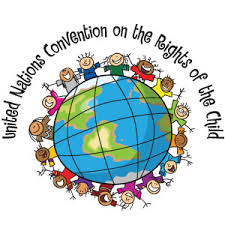

Thereby the governments are obliged to bring their legislation, policy and practice into accordance with the standards in the Convention to transform the standards into reality for all children and to abstain from any action that may preclude the enjoyment of those rights or violate them. Ratification means that governments commit themselves to ensuring that they meet the standards of the Convention. Currently, the Convention on the Elimination of All Forms of Discrimination against Women is cited as the nation’s top priority among human rights treaties.


Government typically will consider only one human rights treaty at a time. For example, the Convention on the Prevention and Punishment of the Crime of Genocide took more than 30 years to be ratified in the United States and the Convention on the Elimination of All Forms of Discrimination against Women, which was signed by the United States more than 17 years ago, has still not been ratified. This examination, which includes an evaluation of the degree of compliance with existing law and practice in the country at state and federal levels, can take several years – or even longer if the treaty is portrayed as being controversial or if the process is politicized. As in many other nations, the United States undertakes an extensive examination and scrutiny of treaties before proceeding to ratify. īy signing the Convention, the United States has signaled its intention to ratify – but has yet to do so. Unanimously adopted by the General Assembly on Novem, it has since been ratified by all the world’s governments, except Somalia and the United States of America. It establishes in international law that States Parties must ensure that all children – without discrimination in any form – benefit from special protection measures and assistance have access to services such as education and health care can develop their personalities, abilities and talents to the fullest potential grow up in an environment of happiness, love, and understanding and are informed about and participate in, achieving their rights in an accessible and active manner. It obligates States to ensure the rights to survival, development, protection and participation of all children without discrimination. The Convention on the Rights of the Child is an international treaty that recognizes the human rights or children, defined as persons up to the age of 18 years. It has been ratified by all of the governments of the world (192 countries), with the exception of Somalia and the United States.The Convention, introduced to the UN by Poland, was written largely by the United States and the Soviet Union over a ten year period (1979-1989).The CRC is the most widely ratified and fastest ratified human rights treaty in the history of the United Nations.


 0 kommentar(er)
0 kommentar(er)
